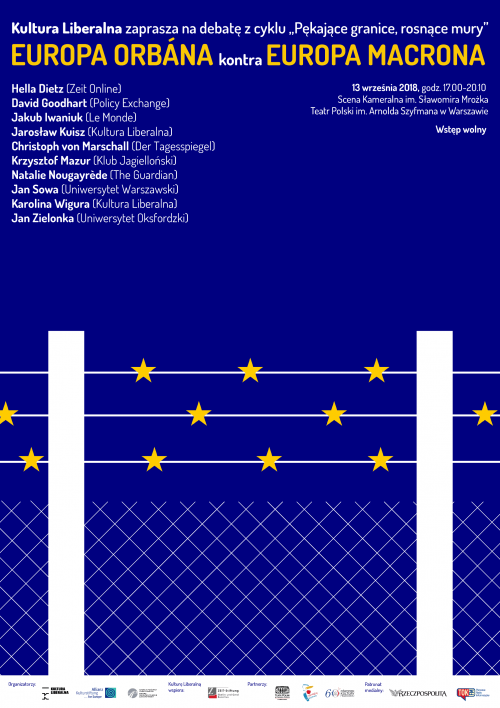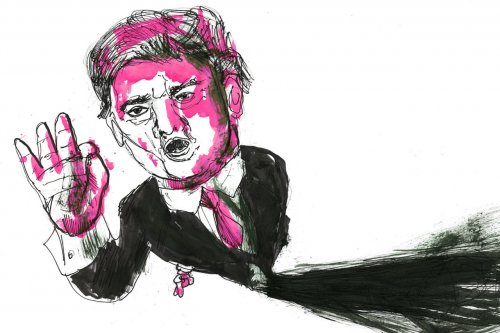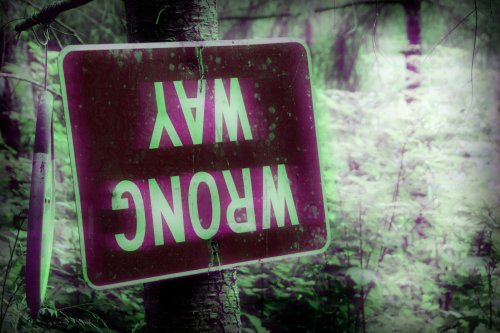Fantasies of a beef lover with a verve of a do-it-yourselfer or a nightmare after overdosing modified soya? Nothing of that kind. It’s a real feast given to us by Next Nature, a Dutch design network, for years materializing the paradoxes of contemporary ‘nature’ in the form of design speculations.
This peculiar menu is a landscape of possible culinary scenarios for the upcoming years. That’s the way the close and far future of meat production and consumption may look like. The culinary culture is transforming in front of our eyes and design makes a perfect tool for discussing its meanders, effects, and future scenarios.
„Bizzare cookbook from which you cannot cook”. What should be added here is – not yet. “The in vitro meat cookbook” had its premiere precisely on the anniversary of the world’s first lab-grown burger presentation. On August 5th 2014, the author of the first in vitro burger, prof. Mark Post received a copy of the world’s first speculative cookbook from the creative director of Next Nature – dr Koert van Mensvoort. How did designers come from pure speculations and abstract considerations to this material form of a culinary album? In a Next Nature Lab at Eindhoven University of Technology, Koert worked with his students on subjects of meat production and consumption. Even though the basis of academic research is purely philosophical, sociological or futuristic, designers present their ideas and conclusions in material forms of sketches, prototypes, and prints. That’s the essence of the Next Nature’s work: an intellectual reflection on reality expressed in an absorbing, aesthetic form. The form, however, often turns out to be provocative just like subjects it rises – the ones provoking discussions, speculations and attempts to formulate the answers for ethically difficult questions.
„As a medium of discussion a cookbook serves the purpose perfectly – it’s a format known to everyone, a digestible one. At the same time it speaks a lot about culture, society, tradition, technology. Cookbooks are media of material culture, stand as a trace of a specific moment in history. Their character is more anthropological than utilitarian. When we want to cook, we look for recipes on the Internet” – says Hendrik-Jan Grievink, co-founder of Next Nature and co-author of the book.
Design responds quickly to the changing reality being its, not only aesthetic, catalyst. Aesthetics plays a crucial role here but more as a medium of an intellectual thought, not a visual, eye-pleasing one. The form of a book, designed under the artistic supervision of Grievink, is thought out from top to bottom. It’s something for sight, touch and… taste. The intention of the authors to create a ‘meaty’ book is visualized in a cover made of a textured paper that loosely resembles meat fiber. More surprisingly, having been printed with a hot blind press, the paper gets the impression of being ‘baked’ and perfectly corresponds with the unique book’s content. Handmade illustrations in slightly washed red speak to imagination and give food for thought. What have I learned from designing The In-vitro Meat Cookbook? To purposefully use specific aesthetic solutions. Not for their own sake, but for a certain intellectual effect – says Grievink.
Because things,we are used to change constantly. Sentimentalism – expressed in a form of a recipe for the carnery in restaurants where our steak grows, in the image of near-brewery pubs, links us to what we know and narrows the field of vision.
„What really matters for every meat-lover is a bone. My inner caveman demands a bone every now and then to chew on. But of course in vitro meat has no bones, since the meat is not cut off of an animal’s body. So one of my favorite recipes in the book is the Bone Pickers; 3D-printed bone structures with shapes that are not derived from the anatomy of the animal, but have an aesthetic of their own. Hence, also a very unique mouthfeel and dining experience. I find it particularly interesting when very old intuitions are paired with new technologies and a contemporary aesthetic, which makes this one of my favorite concepts in the book.”
As exquisite as the form is, the content leaves no room for disappointment: a language of meaty speculations takes readers captive. Ironic, distanced but strikingly to the point. Each recipe is given a star rank: five stars stand for a high probability of a recipe being introduced, four and less – the probability becomes respectively lower.
Does in-vitro meat pretend to be something it is not? Contemporary obsession with transparency has made designers to coin the term “Honest from the lab”. Only when we see in-vitro meat as safe and healthy instead of as uncertain and fake can it become authentic. And why is all that? In Next Nature we use the metaphor of a pilot. If you want to fly, you have to memorize theory to use it while operating a flight simulator. It’s a necessary stage in order to fly in the sky. The contemporary market deprives us of such a possibility. It’s transparent. Our consumer choices are realized by the market’s mere existence and a speculative layer. We lack a flight simulator where you can make mistakes, verify theories, have accidents. Our activity is to build such simulators thanks to which every beginner pilot can bruise a little bit.”[2]
What appetizers are served by the Next Nature airlines? Even though I don’t eat meat, it makes my mouth water to think about “Meat Fruit” mixing ripeness and fancy shapes of fruit picked by women with bloodiness of game guaranteed by hunting activity of men. A truly gender and post-patriarchal dish! Celebrity Cubes on the other hand – portions of personalized tissue grown from celebrities’ cells mock consumerist culture that falls prey to itself.
There is no need at all for a cookbook to be about cooking! The culture of animals’ muscle tissue in a laboratory environment provides us with a pretext to talk about stereotypes, thinking schemes, ecology, culture, and even gender roles. That there is a necessity for a publication of that kind has been known from the very beginning – part of the publication’s costs was funded by crowd-funding.
The book has gathered much attention and has already been reviewed by Huffington Post and Der Spiegel among others. Next Nature has been nominated for the annual Dutch Design Award in design research category (for the second time, both nominations for authorial publications).
Hendrik-Jan Grievink: “If you ask me whether I would eat in-vitro meat, the answer is simple: I eat cheese and I drink beer, both very cultured products. The conclusion is obvious to me. Of course I would eat it, why not?”
[1] Koert van Mensvoort, introduction to “The In Vitro Meat Cookbook”, BIS Publishers, 2014.
[2] “Design as a flight simulation”, Agata Dąbrowska, interview with Hendrik-Jan Grievink, Futu Paper, nr 2/2014, s. 26.







